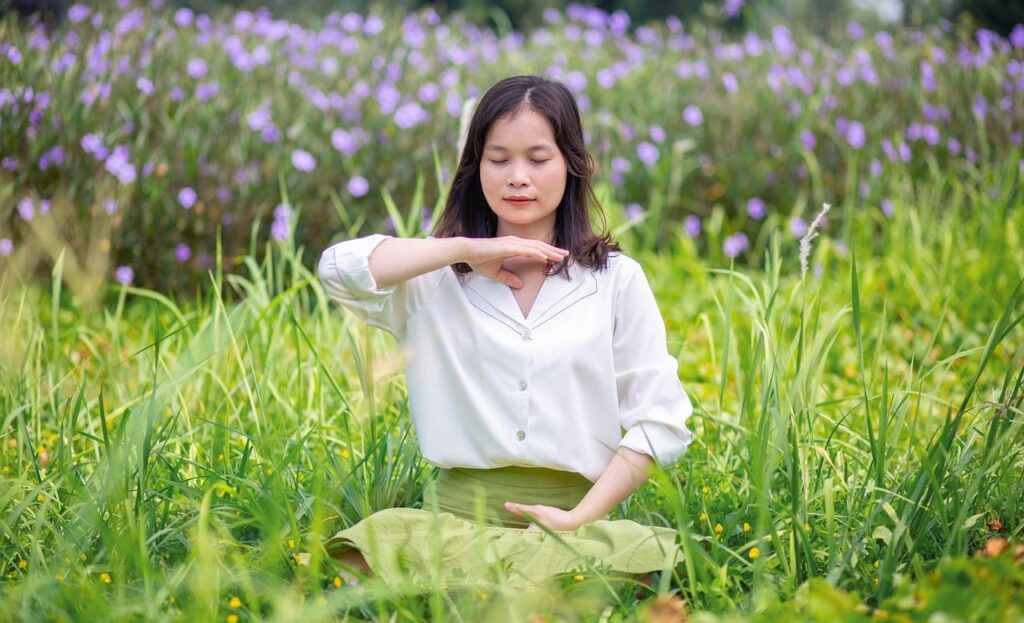I’ve addressed meditation previously on this blog a couple times here and here. But it’s such a powerful tool, so let’s give it another go!
From Mindful.org: The most important tools you can bring with you to your meditation practice are a little patience, some kindness for yourself, and a comfortable place to sit. And an added bonus: you don’t need any extra gear or an expensive membership.


You can meditate wherever you are, whatever you’re doing, though maybe not while you’re driving! And there’s something for everyone. Research shows that just 8 minutes a day of meditation can be beneficial, so it’s okay to start small, 5 mins is a good gentle timer to set.
In my exploration of this topic I came across 9 different types of meditation:
Loving-kindness meditation
– cultivate an attitude of love and kindness toward everything, even enemies and sources of stress
– breath deep and open mind to receive loving kindness
– send messages of the same out into the world and to specific people
– repeat many times, until feel an attitude of benevolence
Progressive muscle relaxation
– start at one end of the body, feet or top of head, and work through the whole body
– the idea of to tense and then relax each muscle set
– can also visualize a wave drifting over their body to release tension
– bring about calm and relaxation, can also help w/ chronic pain
Mindfulness meditation
– remain aware and present in the moment, aware of present surroundings
– no judgement
– can do anywhere, waiting in line at store, calmly notice sight, sound, smell, touch, taste
Breath awareness meditation
– breathe slowly and deeply, focus only on breathing and let other thoughts drift away
Mantra-based meditation
– continuous repetition of syllables, phrase, or words either aloud or silent to self
– redirect negative thoughts into mantra
Transcendental meditation
– remain seated and breathe slowly, the goal is to transcend or rise above the current state of being
– focus on mantra
– may choose to focus on affirmation
Movement meditation
– observing specific movements of the body
– or being mindful during a walk, in nature or the city, different things to take note of
Object-focus meditation
– focusing attention on a specific object or mental image
Guided meditation
– listen to a guide directing you through a type of meditation, whether it be body scan or breath awareness or others
– a great way for beginners to get into the practice
And remember, it’s important not to expect meditation to solve all of your problems. This is one tool of many. Instead, you can treat it like a part of your self-care routine that plays a role in helping you feel better and less stressed. Meditation can lower your stress, improve your focus, reduce general brain clutter, and help you connect with yourself and others better.
Some of the Impacts of Meditation:
The best thing you can do for yourself is turn meditation into a regular habit, here’s some tips:
1) Put reminders around, but remember to switch them up so they don’t become part of the backdrop
2) Leave equipment, like a yoga mat, or meditation pillow, or sound bowl at the ready
3) Create new patterns – if I have 10 mins to spare, I will do a guided meditation, or if I do X job I will reward myself with 5 minutes of mindfulness, or after every phone call I will take time to focus on my breathing
4) Make a commitment with someone, a friend or colleague, check-in when you start/finish
5) Smile when you’re done, encouraging dopamine and you are more likely to want to do it again next time!
As you can see, meditation comes with many benefits, however if you experience mental health issues, talk to your doctor before starting a regular practice of meditation. There have been studies that show it can be triggering in some specific cases. If you’re looking for someone to embark on this endeavour with you, reach out for a free 30 minute discovery call, I’d love to assist you in getting your meditation practice going.
Subscribe to get the latest posts sent to your email.
Copyright © 2024 by Rev. Stephen B Henry PhD.
All rights reserved.
Another Website by Ultimate Virtual Solutions
Design • Content • SEO